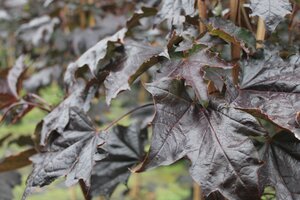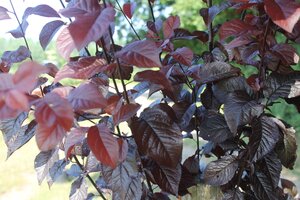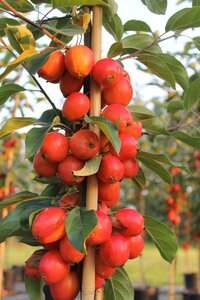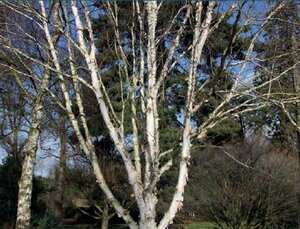Crateagus Paul's Scarlet
Why Buy Me?
- Attractive canopy of branches
- Beautiful flowers
Growing Conditions
Light:
Full sun to partial shade. Thrives and flowers best in full sun, but tolerates some light shade without significant reduction in bloom or health.
Soil:
Moist, well-drained soil. Grows well in clay, loam, or sandy soils, and tolerates a wide range of pH from slightly acidic to alkaline. Avoid very wet or poorly drained sites.
Exposure:
Ideal for open, sunny locations in gardens, parks, and streetscapes. Hardy, frost-hardy and wind-tolerant. Withstands urban pollution and coastal exposure.
Drought Tolerance:
Moderate. Once established, tolerates dry periods, especially in heavier soils. Water during prolonged droughts to maintain flowering and foliage health.
Cultivation & Care
Planting Time:
Plant in autumn or early spring when the ground is workable and conditions are moist. Avoid planting in frozen or waterlogged soils.
Spacing:
Allow 4–6 metres (13–20 feet) between trees. Grows to a mature height of 5–8 metres (16–26 feet) with a similar spread. Forms a dense, rounded crown.
Watering & Fertilization:
Water regularly in the first 1–2 years. Mature trees require little supplemental water except during extreme drought. Apply compost or a balanced fertilizer in early spring for optimal growth and flowering.
Mulching & Pruning:
Mulch annually in spring to conserve moisture and suppress weeds. Prune in late winter or early spring to remove dead, crossing, or congested branches. Light shaping can be done after flowering.
Seasonal Interest
Spring:
Masses of double, rich rosy-red to crimson flowers bloom in mid- to late spring (typically May). Flowers appear in dense clusters, creating a dramatic display.
Summer:
Dark green, glossy foliage provides an attractive canopy. The tree maintains a tidy, rounded habit and is highly ornamental.
Autumn:
Foliage may develop yellow or bronze tones before falling. Fruit production is limited or absent due to the double flowers being mostly sterile.
Winter:
Sturdy, thorny branches provide structural interest. Dense branching offers shelter for birds and visual texture in the winter garden.
Wildlife & Garden Use
Wildlife:
Although fruit is rare due to the sterile flowers, the tree still provides shelter and nesting sites for birds and insects. Native hawthorns are more ecologically beneficial, but ‘Paul’s Scarlet’ adds habitat structure.
Garden Use:
Excellent small ornamental tree for gardens, borders, avenues, and urban landscapes. Valued for its long-lived, compact form and reliable spring flower display. Suitable for traditional, cottage, or wildlife-friendly gardens.
Companion Plants:
Combines beautifully with spring-flowering bulbs (like Tulips, Alliums, and Narcissus), herbaceous perennials (e.g., Geranium, Nepeta, Aquilegia), and contrasting shrubs such as Cornus or Spiraea. Underplant with shade-tolerant groundcovers in mature plantings.
-
EAN code9000011732
- Brand
- AspectFull Sun
- Foliage ColourGreen
- Width in ft5 meters
- Height in ft6- meters
- Pot size12 Litre
Collect your Order from one of our sites!
Order and pay online and select the day you would like to collect your order from one of our four sites.
Local deliveries available, please order and pay online for delivery within 5 working days. See our terms & conditions.




